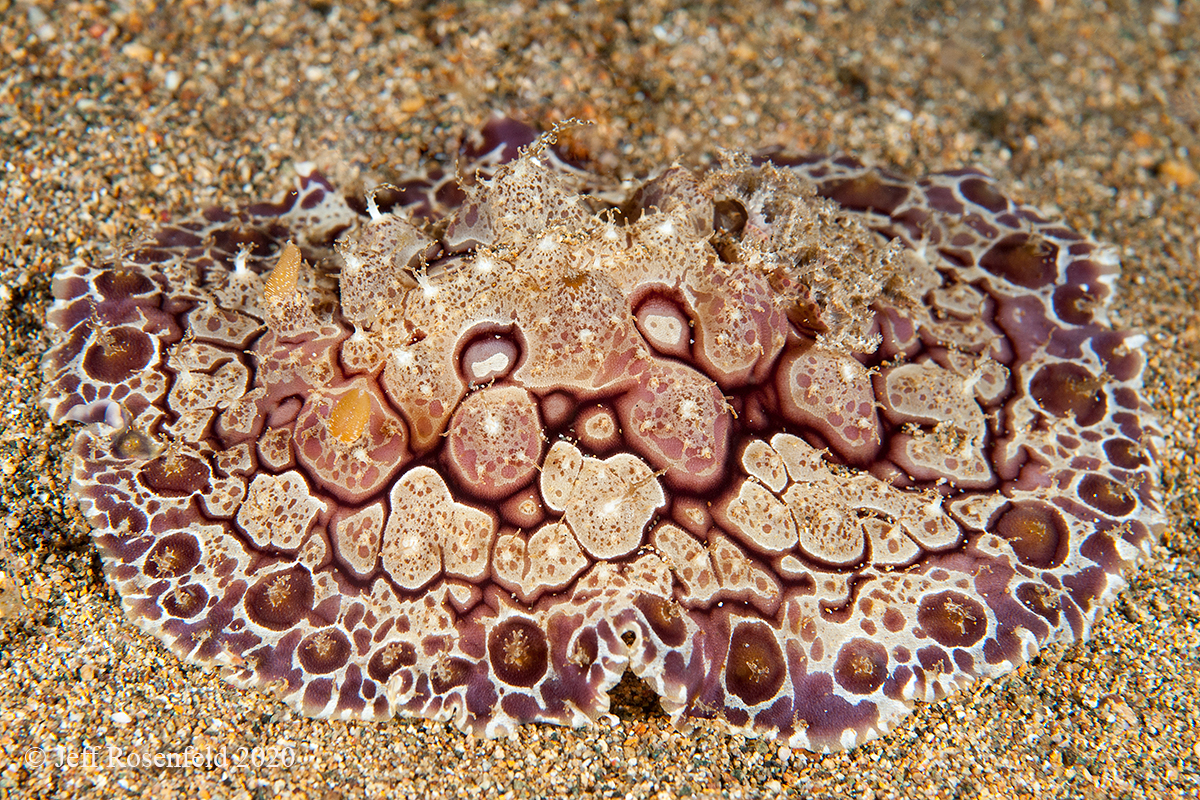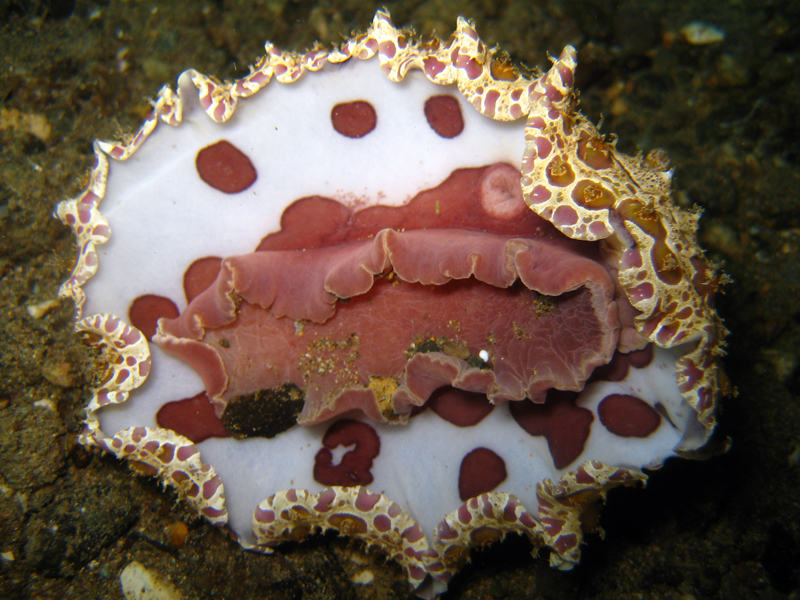 |
Image courtesy of Jeff Rosenfeld
Webmaster
The Vibrant Sea
Anilao, Philippines 2015
Image courtesy of Terry Gosliner

A bunch of us Branchers led by Webmaster Mike found this huge undescribed species in Anilao, Philippines back in 1995 when Terry and Mike found it during a night dive in the Puerto Galera Channel, Mindoro, Philippines. Many of you have asked me how long it takes to describe a new species - Well this is a good example. How about 25 years. Size does not matter. What matters is collecting adequate specimens and finding the time to do all the necessary genetic and morphological analysis. Usually, responsible scientists like Terry Gosliner, like to wait and work up an entire group of species at once, allowing for proper differentiation of species within a genus. That is what has happened here as Terry and his student, Samantha Donohoo, evaluated a group of discodorids, focusing specifically on the genera Asteronotus and Hoplodoris. The living animals are large, oval in shape, range in length between 80-120 mm. The body color is complicated - cream and tan with brown papillae with short random branches along a single stem; numerous large tubercles; pink, red, and light purple concavities along the center; tan and cream concavities in descending size (medium-small) approaching the edge of the mantle; with some concavities lined with black rings, and small purple blotches along the mantle rim. The underside of the mantle is cream with medium rose-colored spots along the edge, large rose-colored blotches surrounding the foot and a light purple band around the mantle's edge. I hope you got all of that. Maybe just look at the photos. This species is named after the large rose-colored spots along the underside of the mantle; as well as for the large, rose-thorn shaped accessory spine, in the accessory gland of the reproductive system. Geographically it is known from the Verde Island Passage, the Bohol region of the Philippines, and the Lembeh Straits of Indonesia where it is active nocturnally.
|
SAMANTHA A. DONOHOO & TERRENCE M. GOSLINER. 2020. A tale of two genera: the revival of Hoplodoris (Nudibranchia: Discodorididae) with the description of new species of Hoplodoris and Asteronotus 2020. Zootaxa 4890 (1): 001-037.
Dave Behrens
Sammamish, WA 98074
Dec., 2020
Send Dave email at davidwbehrens@gmail.com
Send Terry email at tgosliner@calacademy.org

Attention all you Sluggers, and you know who you are! The NSSI 2nd edition is now available in ebook PDF and book form . The hard back version will become available Nov. 1st. Both will cost $65 (individually). You will need to jump through a few hoops to get the electronic version as pdf distribution is protected by Adobe ID!! Please read the following to enable reading your electronic purchase! This new 2nd Edition is updated and reorganized, including 185 new species. Among other features, the new edition includes additional photographs of species, an identification key, and an up-to-date classification reflecting the latest evolutionary relationships. The Indo-Pacific represents the largest expanse of tropical ocean in the world, stretching from the Indian Ocean coast of southern Africa and the Red Sea to the central Pacific of the Hawaiian Islands, Easter Island and the Marquesas. This region supports the most diverse marine fauna of any place in the world for most groups of marine organisms. The nudibranchs and sea slugs are no exception to this rule; there are about 3,000 described species of these organisms in the world and at least 40% of these have been found exclusively in the Indo-Pacific tropics. This book illustrates 2,138 Indo-Pacific nudibranchs and sea slugs, including many undescribed species.
|

|
